Cards In This Set
| Front | Back |
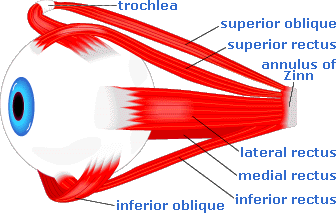 Inferior Rectus |
Action- Eye looks down
Innervation- Ocumotor nerve (III)
|
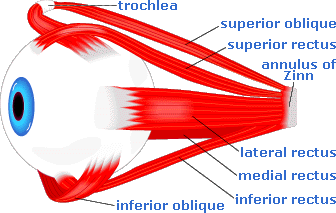 Medial Rectus |
Action- Eye looks medially
Innervation- Ocumotor nerve (III)
|
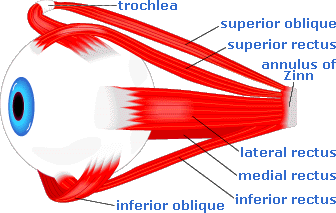 Superior Rectus |
Action- Eye looks up
Innervation- Ocumotor nerve (III)
|
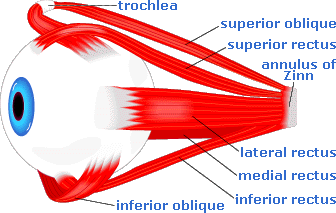 Lateral Rectus |
Action- Eye looks laterally
Innervation- Abducens nerve (VI)
|
 Inferior oblique |
Action- Eye rolls looks up and laterally
Innervation- Oculomotor nerve (III)
|
 Superior Oblique |
Action- Eye rolls, looks down and laterally
Innervation- Trochlear Nerve (IV)
|
 Palpebrae |
The eyelid- Continuation of the skin. Their continual blinking keeps the surface of the eye lubricated, remove dust and debris
|
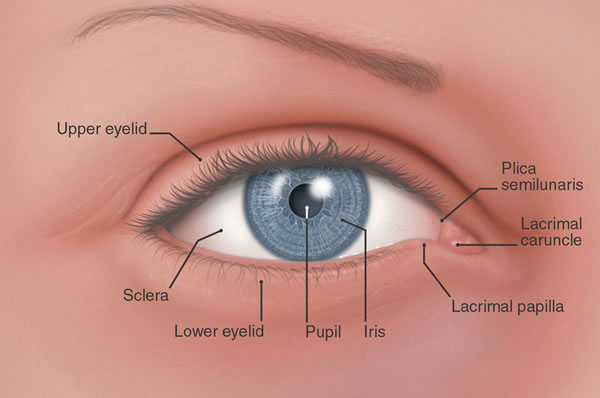 Lacrimal Caruncle |
Mass of soft tissue contains glands that produce thick secretions that contribute to the gritty deposits that sometimes appear after a good nights sleep
|
|
Conjunctiva
|
The epithelium covering the inner surface of the eyelids and the outer surface of the eye. It is a mumucous membrane covered by stratified squamous epithelium
|
|
Palpebral conjunctiva
|
Covers the inner surface of the eyelids
|
|
Ocular conjunctiva
|
Cover the anterior surface of the eye
|
|
Cornea
|
The transparent part of the outer fibrous layer of the eye. Allows light into the eye and refracts it. it is about 5-6 layers of avascular cells
|
|
Lacrimal Apparatus
|
produces, distributes and removes tears. Consists of a lacrimal glad with ducts, paired lacrimal canaliculi, a lacrimal sac and a nasolacrimal duct
|
|
Fornix
|
The pocket created where the palpebral conjunctiva becomes continuous with the ocular conjunctiva
|
|
Lacrimal Gland
|
A gland about the size and shape of an almond nestels within a depression of the frontal bone just inside the orbit and superior and lateral to the eyeball. it provides key ingredients and most of the volume of the tears that bathe the conjunctival surfaces
|



